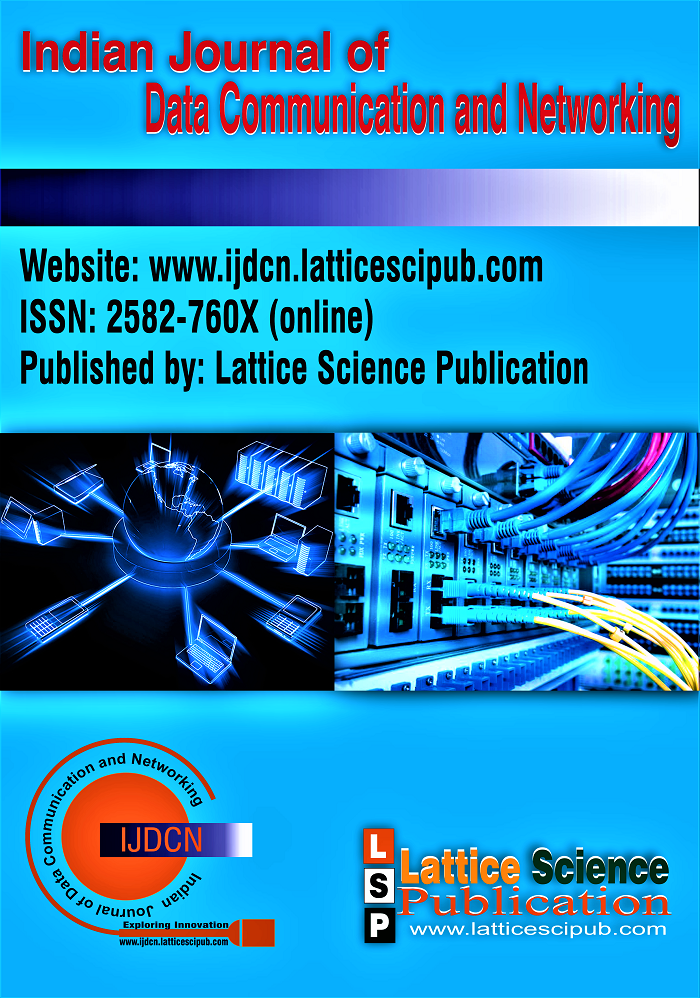Email Marketing: The Most Important Advantages and Disadvantages
Main Article Content
Abstract
This paper focuses primarily on the role of Email marketing and E-commerce. Email marketing is one of the most modern means and marketing methods in the world. The modern information and communication technologies also facilitate the circulation and sending of electronic messages with the highest quality and accuracy. In addition, Email marketing campaigns help to increase the sale of products in electronic shops and to target customers efficiently and legally. However, despite the benefits of Email marketing, there are also many negatives that constitute a real obstacle to promotion and marketing via this messaging system. This study focuses on discussing the most important advantages and disadvantages of Email marketing and analyzing the success factors of this marketing by avoiding these disadvantages and benefiting all these advantages.
Downloads
Article Details

This work is licensed under a Creative Commons Attribution-NonCommercial-NoDerivatives 4.0 International License.
How to Cite
References
S. Ansari, R. Kohavi, L. Mason, and Z. Zheng, (2001), « Integrating E-commerce and Data mining: Architecture and challenges », IEEE, pp.27-34. [CrossRef]
N. Artz, and P. Cooke, (2007), « Using E-Mail Listservs to Promote Environmentally Substainable Behaviors », Journal of Marketing Communications, Vol.13, n°4, pp.257-276. [CrossRef]
I. Ayres, and M. Funk, (2003), « Marketing Privacy: A Solution for the Blight of Telemarketing (and Spam and Junk Mail) », Yale Journal on Regulation, Vol.20, n°77, pp.78-137. [CrossRef]
R.E. Bucklin, and C. Sismeiro, (2009), « Click Here for Internet Insight: Advances in Clickstream Data Analysis in Marketing », Journal of Interactive Marketing, Vol.23, pp.35-48. [CrossRef]
H. Brandal, and R. Kent, (2003), « Improving email response in a permission marketing context », International Journal of Market Research, Vol.45, n°4, pp.1-13. [CrossRef]
L. Chittenden, and R. Rettie, (2003), « An evaluation of e-mail marketing and factors affecting response », Journal of Targeting, Measurement and Analysis for Marketing, Vol.11, n°3, pp.203-217. [CrossRef]
D. Cruz, and C. Fill, (2008), « Evaluating viral marketing: isolating the key criteria », Marketing Intelligence & Planning, Vol.26, Issue.7, pp.743-758. [CrossRef]
N. Dheeraj, and J. Paras, (2017), « E-Commerce and Insurance Internet Marketing: A Business Review from Indian Context », International Journal of Scientific Research and Management, Vol.5, Issue.09, pp.7124-7128.
F. Ellis-Chadwick, and N.F. Doherty, (2012), « Web advertising: The role of e-mail marketing », Journal of Business Research, Vol.65, pp.843-848. [CrossRef]
Published By:
Lattice Science Publication (LSP)
© Copyright: All rights reserved.
Retrieval Number:100.1/ijdcn.B5005021221
DOI:10.54105/ijdcn.B5005.061321
Journal Website: www.ijdcn.latticescipub.com
E. Fariborzi, and M. Zahedifard, (2012), « E-mail Marketing: Advantages, Disadvantages and Improving Techniques », International Journal of e-Education, e-Business, e-Management and e-Learning, Vol.2, n°3, pp.232-236. [CrossRef]
T. Hennig-Thurau, and A. Klee, (1997), « The impact of customer satisfaction relationship quality on customer retention: A critical reassessment and model development », Psychology & Marketing, Vol.14, n°8, pp.737-764. [CrossRef]
C.C. Huang, T.C. Liu, and K.J, Lin. (2009), « Factors afeecting pass-along email intentions (PAEIs) : Integration the social capital and social cognition theories », Electronic Commerce Research and Applications, Vol.8, pp.160-169. [CrossRef]
Y. Jain, and R. Garg, (2014), « Business Intelligence: National email benchmarking report 2013 », Journal of Direct, Data and Digital Marketing Practice, Vol.16, n°2, pp.92-97. [CrossRef]
R. Kaur, and G. Singh, (2017), « Internet Marketing: The New Era of Innovation in E-commerce », International Journal of Scientific Research in Computer Science, Engineering and Information Technology, Vol.2, Issue.1 pp.253-258.
M.S. Loganathan, N. Kumar, and L. Devi, (2017), « Effects of online advertising on consumers in Coimbatore city », International Education & Research Journal, Vol.3, Issue.09, pp.52-54.
Payne, and S. Holt, (2001), « Diagnosing Customer Value: Integrating the value process and relationship marketing », British Journal of Management, Vol.12, pp.159-182. [CrossRef]
J.E. Phelps, R. Lewis, L. Mobilio, D. Perry, and N. Raman, (2004), « Viral Marketing or Electronic Word of Mouth Advertising: Examining Consumer responses and motivations to passa long email », Journal of Advertising Research, Vol.44, Issue.4, pp.333-348. [CrossRef]
R. Rettie, (2002), « Email Marketing: Success Factors », Working paper, Kingtom Business School.
F. Sabbagh, (2017), « Email marketing campaigns », Edition Knoowy, Study Documents.
M. Salehi, H. Mirzaei, M. Aghaei, and M. Abyari, (2012), « Dissimilarity E-marketing VS traditional marketing », International Journal of Academic Research in Business and Social Sciences, Vol.2, n°1, pp.384-389.
T. Tezinde, B. Smith, and J. Murphy, (2002), « Getting Permission: Exploring Factors Affecting Permission Marketing », Journal of Interactive Marketing, Vol.16, n°4, pp.28-36. [CrossRef]
K. Wardell, (2006), « Method for Optimizing a Marketing Campaign », Patent Application Publication, Sheet.1-13.
R.S. Winer, (2001), « Framework for customer relationship management », California Management Review, Vol.43, n°4, pp.89-105. [CrossRef]





